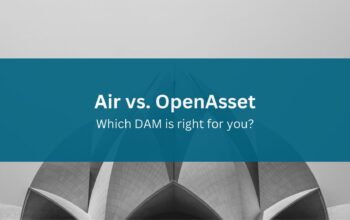To build the case for a digital asset management (DAM) system in your organization, you’ll need to back up your arguments with figures and metrics. Business measurement tools, such as return on investment (ROI) and key performance indicators (KPIs), allow you to express how the investment in DAM will stack up and be monitored. Without the addition of these quantitative methods, it can be challenging to get the powers that be in your organization to stand up and take notice. With the right metrics, however, you’ll be able to give quantitative figures that your budget holders understand.
What are KPIs and Why are They Important for DAM?
KPIs are a measurement tool that can be adjusted to fit individual businesses and the projects within them. The metric is the expression of a goal that is a critical accomplishment for the project or even the business as a whole. KPIs are different for every organization and, ultimately, will depend on what it is trying to achieve. They are a reflection of a firm’s mission as well as it’s long and short-term objectives. Along with ROI, KPIs will be established at the beginning of a project but are also able to be used as ongoing tools to keep track of performance.
While ROI focuses on financial performance, KPIs are broader and also track non-financial objectives. This makes them the ideal supporting metric for ROI when creating a business case for DAM. ROI will provide you with a percentage or ratio that allows DAM to be directly compared to other marketing technologies. However, supporting ROI with KPIs gives decision-makers a steer of the strategic benefit of DAM and its long-term value.
Building Your KPIs for DAM
As KPIs are designed to be used on every level from company-wide objectives to individual departments, they lend themselves perfectly to DAM. By using KPIs, you can link the project to the rest of the business, ensuring that implementing the new system aligns with your organization’s principal aims. To build your list of KPIs for DAM, you need to select the metrics that best align with your objectives. It’s vital to choose the right KPIs to ensure that you can demonstrate measurable improvement.
There isn’t a one-size-fits-all answer to establishing KPIs for your project and every organization differs. That said, to build the right KPIs for DAM, you’ll need to consider a few things:
- Your company objectives – selecting KPIs that relate to your core business objectives will significantly help in demonstrating the value of DAM. Most companies will have a revenue generation target
- The number of metrics – while it’s great that so many things are measurable, if you select too many metrics you risk losing sight of what matters amongst all the noise. Between four to ten KPIs should be sufficient to focus your efforts.
- Your company’s stage of asset management – depending on the current state and volume of your digital assets you need to adapt your year-on-year metrics accordingly.
Once you’ve considered these elements, you’ll need to establish your KPIs. Ultimately, the KPIs that are most relevant for your DAM solution will be those that deliver the most value to your organization. To be able to quantify your KPIs, they will need to be related to goals.
How to Set Goals
With the volume of data available to us, we can use data to drive our decisions, and this is a very powerful tool when it comes to justifying DAM. As your KPIs will be translated from your business objectives, it’s vital to start by setting your goals. These will be the major areas of improvement for your organization and within the management team.
You’ll need to ensure your goals are SMART (Specific, Measurable, Actionable, Relevant, and Time-related), to give others confidence in your KPIs. By creating SMART goals, you can be sure that they are easily understood and not subject to being misinterpreted. As your goals are achievable, you know you’ll have the opportunity to prove the business value of DAM alongside the ROI. Some examples of SMART goals for DAM include:
- Decrease the amount of time it takes to manage digital assets by X% over the next 2 years.
- Reduce the marketing team time required to produce bids and proposals by X% in the next year.
- Reduce the time it takes to search for the required digital assets from X minutes to X minutes in the next year. Ultimately saving X amount of time over 1 year.
With strong metrics in place that represent your goals, you’ll be able to assure the management team that your DAM system is achieving what you promised.
How KPIs support ROI
Calculating the ROI of DAM involves considering all of the quantitative and qualitative costs and benefits it can offer your organization. While ROI gives a relatable figure to your company’s decision-makers, KPIs assure them that DAM aligns with business goals and its success can be appropriately measured.
You need to be able to determine the goals for any new initiative and to accurately measure its worth. Hence the importance of ROI and KPIs for DAM, the measurement tools allow you to gauge your success. If you need a little help in calculating the ROI of your chosen DAM solution, take a look at our guide ‘How to Measure DAM ROI’. Not only will you produce a realistic calculation, but you’ll also understand the importance of building a business case around it to ensure you get the DAM system your organization needs.



